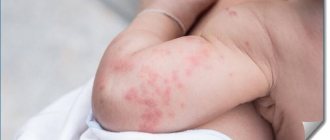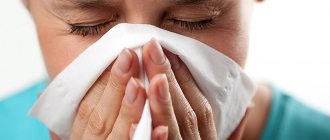Among young mothers whose children suffer from diathesis and adult allergy sufferers, you can meet people asking the question: is poppy an allergen or not? Doctors classify the seeds of this plant as safe products that very rarely cause a negative reaction, but cases of allergies to baked goods or dishes with poppy seeds still occur.
However, it is not always possible to recognize the cause of allergic manifestations, since poppy seed rolls and buns have many components, from flour with a large amount of gluten to food additives. Poppy can also be an irritant, although in very rare cases.
Causes, reaction mechanism
Some types of foods can cause an allergic reaction in the body, but, fortunately, not everyone does. A logical question arises here: why are some people susceptible to food allergies and others not? In order to answer it, it is necessary to analyze many factors related to the individual characteristics of the patient’s body and even the circumstances of his intrauterine development. So, the following can be considered the main circumstances that determine the body’s immune response to allergenic products:
- genetic predisposition;
- increased production of antibodies by the embryo during intrauterine development, due to the neglect of the rules of diet on the part of the woman expecting a child;
- short period of breastfeeding;
- congenital or acquired pathology of the intestinal mucosa (increased permeability), allowing unwanted substances to enter the bloodstream;
- persistent imbalance of positive intestinal microflora.
From the moment allergy-causing products enter the body of a person prone to allergic manifestations, a special reaction of his immune system to foreign proteins immediately occurs. In the body of a person who is not subject to an allergic reaction, these allergens are successfully transformed into a neutral form that does not harm him.
If the body develops an immune response to a foreign protein ingested in food, both children and adults may experience the following symptoms:
- skin rashes, urticaria, eczema;
- swelling;
- sensations of discomfort and pain in the abdomen;
- indigestion, diarrhea, bloating;
- suffocation, bronchial obstruction, bronchospasm;
- headache; sneezing, runny nose;
- cardiovascular disorders, tachycardia;
- atopic dermatitis (in children).
In severe cases, angioedema and anaphylactic shock may develop.
Food allergies can persist throughout life, and the patient must constantly avoid hazardous foods to avoid triggering symptoms.
Prevention
Allergy prevention is possible and should be followed.
Preventive measures for pregnant women and during lactation:
- to give up smoking;
- balanced diet, it is advisable to adhere to a diet;
- eating foods that can cause allergic reactions only after consulting a doctor;
- try to remove sources of household allergies as much as possible.
For children:
- balanced diet, reduce the consumption of legumes to a minimum;
- allergy medications only after a doctor’s prescription;
- testing for allergen groups after three years.

For adults:
- quitting smoking and alcohol;
- if the first symptom appears, immediately seek help from a doctor;
- try to avoid sources of allergies.
The most common food irritants
Allergenic products can be divided into three large groups:
- Allergens with high activity, which include whole milk, chicken eggs, fish and seafood, nuts (especially peanuts), pineapple, citrus fruits, bright red berries, melon, grapes.
- Moderately active allergens are peach, apricot, rice, potatoes, paprika, corn, peas.
- Weak allergens are zucchini (squash), bananas, watermelon, some types of meat (poultry, lamb, pork).
In general, if we detail the answer to the question of which products can cause allergies, the list will be quite voluminous.

Plant allergens
- various varieties of cereals - wheat, bran, barley, rye, sorghum, buckwheat, etc.;
- fruits – brightly colored apples, quinces, plums (prunes), wild berries;
- tomatoes, eggplants, cucumbers, sweet potatoes, beets, almost all types of cabbage;
- legumes - asparagus, beans of various varieties, soybeans, lentils;
- greens - lettuce, artichoke, dill, parsley, fennel, parsnips, celery, green onions, leeks;
- pomegranate, persimmon, papaya, avocado, figs;
- seasonings and spices - mint, thyme, sage, marjoram, cloves, black and allspice, sesame, nutmeg, turmeric, ginger, cardamom, bay leaf;
- mushrooms (traditional and yeast);
- coffee; chocolate and products made from it.
Allergens of animal origin
- shrimp, crabs, lobsters, turtles;
- duck, goose meat, game meat dishes - pigeons, guinea fowl, pheasants, partridges, black grouse;
- butter, allergy to hard cheese;
- beef, goat meat, meat of wild animals - wild boar, deer, hare, squirrel;
- red and black caviar, eel, catfish, pike, tuna, pangasius, sturgeon, herring, halibut, cod, hake, hake, sturgeon, perch;
- oysters, mussels, squid, frogs.
As you might guess, the list presented is far from complete, since due to the individual characteristics of each organism, absolutely any food product can cause an allergic reaction.
Why do food products have different degrees of allergic activity? Experimentally, doctors came to the conclusion that the most common culprits of allergies are glycoproteins - food allergens with a molecular weight from 10 thousand to 67 thousand. These protein substances are water-soluble and quite resistant to acids, as well as high and low temperatures.

Due to the high content of the above-mentioned food allergens, the most allergically unfavorable are eight products (in increasing degree of antigenicity):
- wheat;
- crabs, shrimp, crayfish;
- fish;
- hazel (hazelnut);
- soya beans;
- whole cow's milk;
- peanut;
- chicken eggs (read about egg allergies in children).
Types of diets for allergies in adults
Elimination
The 21st century is the century of allergies. According to statistics, about 10% of children and adults in Europe suffer from bronchial asthma, and 30% suffer from other allergic diseases. Therefore, this problem becomes more and more urgent every year.
Physiologically, children have high intestinal permeability and relatively reduced function of the excretory system (skin, respiratory system and kidneys). Therefore, children are especially vulnerable to the external environment and are more prone to allergies compared to adults, which means they need a carefully prepared diet.

Whole milk and eggs must be excluded from the diet of formula-fed babies under 1 year of age.
Rules for introducing complementary foods to babies with allergies:
- at the age of 4 months, vegetable (dim!) purees and compotes are introduced;
- at 5 months - melted butter and vegetable oils, cereals based on soy products;
- at 6 months - boiled lean meats;
- at 7 months - low-fat cottage cheese (can be baked) and other fermented milk products;
- at 8 months - unsweetened biscuits (biscuits).
How to eat
The diet is prepared by an allergist taking into account the individual characteristics of the patient’s body and must include a balanced amount of nutrients, microelements, vitamins, etc., necessary for the full functioning of the body. It is necessary to remove the most allergenic foods from the menu first, that is, foods with a high allergenic potential, as well as foods with average allergenic activity. Unfortunately, if you consume even a small amount of the allergen, the symptoms will return, so only unconditional refusal of dangerous food (elimination from the diet) is practiced.
Diet for adults
Nutrition for allergies in adult patients should be structured so that reaction-causing foods are completely excluded from the diet. It is not always easy to identify them, so it is recommended to keep a food diary and evaluate the food allergen panel - that is, the analysis results obtained in the laboratory.
It is worth knowing that a reaction can be provoked not only by food allergens, but also by accompanying substances that are sometimes present in the food product. For example, poultry meat may contain antibiotics and/or hormones that cause allergies, wines may contain chemicals that were sprayed on vineyards, etc. Factory-produced products almost always contain various additives: dyes, flavor enhancers, preservatives - all of them can also cause allergies.
Diet for children
As for young children, the peculiarities of the child’s body should be taken into account - increased permeability of the intestinal wall and enzyme deficiency. This leads to the penetration of non-transformed proteins into the bloodstream, due to which food allergies in children manifest themselves much more often than in adults. After the final development of the child’s digestive system, signs of food allergies may go away on their own.
Products that cause allergies in children should not be present in the diet, even in moderate quantities. A table of allergenic foods is necessary for every nursing mother, since during breastfeeding the responsibility for ensuring that allergens do not enter the baby’s body falls on her shoulders. Products that cause allergies in adults and allergenic products for children are the same food allergens with varying degrees of allergenic activity, so the diet can be very strict.
Compliance with a strict diet is recommended for three to four weeks, and if the patient’s condition has stabilized, you can, in consultation with your doctor, try to expand the diet.
Once again about how you can avoid the body’s immunological reaction to foods.
Food allergies? There is a solution - a special diet!
How does the reaction occur in an adult body, what should you pay special attention to and what diagnostic and treatment methods exist.
Strawberries are a fairly common allergen. All about methods of prevention and treatment.
What does an allergy sufferer need to know?
For people who suffer from allergies, it is important to remember that not all legumes can cause an allergy. This can be checked by testing and find out what exactly the reaction occurs to. Doctors also insist on diagnosis; timely testing will help a faster cure.
Did you know? You can also make sweets from red lentils, but no one can tell what they are made of by the taste.
An allergenic product can be inconvenient, especially if treatment is delayed indefinitely. Therefore, you should not put off the problem for long, because the symptoms can be different and unpredictable.
Allergen f235 - lentils, IgE
Lentils, as an etiological factor in food allergies, are classified as having an average degree of allergenic activity (without taking into account individual characteristics). The most common manifestations are diseases of the digestive system (allergic stomatitis, cheilitis, gastritis, colitis, gastroenteritis), skin (atopic dermatitis, urticaria, Quincke's edema) and less often - respiratory organs (allergic rhinitis, asthma). Determination of specific immunoglobulin E to a given allergen in increased quantities indicates an acute allergic reaction (immediate hypersensitivity).
Synonyms Russian
Specific immunoglobulin E to lentils, allergy to legumes.
English synonyms
Allergen f235 - lentil.
Research method
Units
IU/ml (international unit per milliliter).
What biomaterial can be used for research?
How to properly prepare for research?
- Do not smoke for 30 minutes before the test.
General information about the study
Legumes are among the most common food allergens. The mechanism of development of the pathological reaction is associated with the presence of specific simple and complex proteins in the plant cell. These are glycoproteins, polypeptides, haptens that combine with the corresponding food proteins. Legumes contain about 30 different antigens, including 8-10 allergens. Some of them exhibit pronounced cross-reactions within this family. The most important components are albumin, vicillin, legumin; the albumin fraction is the most allergenic.
Lentils are a legume rich in vitamins and proteins. Belongs to the same family as beans and peanuts. If you are allergic to peanuts or peas, you may also be allergic to lentils.
The ability of a food protein to act as an allergen for a child or adult depends on the presence in its composition of so-called epitopes, structures capable of inducing the production of IgE antibodies. The synthesis of these mediators and further activation of the activity of mast cells and basophils leads to the development of symptoms. Lentils, like other legumes, can be an allergenic food, although allergies to them are not common. The severity of clinical signs also depends on the amount of allergen ingested.
Legumes are a food allergen. All about legume allergies - causes, symptoms, treatment
Allergy to legumes: who is at risk
Legumes are unique plants. Before the advent of potatoes in Europe, they were a staple food on the continent and remain popular today. Thanks to their unique ability to synthesize protein, representatives of this culture are not only nutritious and healthy, but also indispensable for vegan and vegetarian menus.
In addition, regular consumption of legumes reduces the likelihood of developing type 2 diabetes. This product is rich in folic acid, which increases the body's defenses, and fiber, which is necessary for the health of the digestive system. Legumes are useful for liver problems, swelling and cough.
Legumes also contain a lot of phytates, which help remove toxins and waste from the body. True, the main thing here is not to overdo it, because the accumulation of these substances can lead to poor absorption of some minerals. There is one more disadvantage - like many foods, legumes can cause allergies or intolerances.
The most popular types of legumes
The legume family includes peanuts, lupine, soybeans, beans, peas and fenugreek. This family also includes lentils and beans, which we buy mainly in dried form.
The most allergenic of this list is peanuts. However, only about 5-10 percent of children with peanut allergies react to other common legumes.
Lupine does not fit into these statistics. Although lupine or foods that contain it are safe for many people to eat, 4 to 39% of people with a peanut allergy also have a lupine allergy.
Those who do not have a reaction can eat lupine whole or grind it into flour, adding it to bread, pastries, pancakes and pasta.
One of the main advantages of this legume is that it is gluten-free. Therefore, it is with this mark that products with lupine can be bought in the store. For example, in the form of gluten-free flour.
But there are reports in the medical literature of allergic reactions to lupine, which can be quite severe, including anaphylaxis.
Moreover, in patients with allergies to other legumes, a reaction to lupine may appear already at the first contact with it. Soy.
Reactions to soy and peanuts are the most common legume allergies worldwide, others tend to be more regional.
In most cases, soy allergy becomes apparent in childhood with a reaction to soy-based infant formula. A reaction to this food is also associated with an allergy to birch pollen. And although children often outgrow a soy allergy, sometimes it remains for life.
Fortunately, soy allergies generally have relatively mild symptoms, such as hives or oral allergy syndrome, which involves itching in or around the mouth. Reactions such as anaphylaxis are rare.
Beans and peas . Allergies to beans and peas, unlike reactions to soy, cannot be considered widespread. At the same time, it has its own characteristics. For example, Canadian scientists have recorded five cases of allergies not to raw, but to boiled peas.
All five were children, and all could eat raw peas. Therefore, cooked beans may be more allergenic than raw beans. And even inhaling the fumes from boiling beans can cause an allergic reaction such as asthma.
Among legumes, beans, as well as chickpeas and peanuts, are the main triggers of allergies in patients with asthma and rhinitis in India. Additionally, these legumes may cross-react with others.
For example, about 10 percent of children who are allergic to peanuts may also be sensitive to peas and beans. Some children outgrow this allergy over time.
Lentils and chickpeas . You may have heard that sometimes allergens are destroyed by temperatures. This allows people with allergies to eat a baked apple or banana, but heating affects legumes, including chickpeas.
The proteins in chickpeas that cause allergic reactions, such as globulin, albumin and prolamins, persist even after cooking.
However, certain cooking methods, such as boiling, although chickpeas are mostly eaten raw, can reduce negative reactions.
If you are allergic to chickpeas, you should also avoid products containing them, such as hummus.
In India and the Mediterranean, lentils and chickpeas are the most common legumes that cause allergic reactions in young children. It is here that the consumption of chickpeas is much higher than in other parts of the world. But no anaphylactic reactions to it were recorded.
Another country where these legumes are the main culprits of food allergies is Spain. Lentils and chickpeas are the fifth most common cause of food allergies in Spanish children.
How not to eat a bean
Avoiding legumes is the best way to protect yourself from allergies to them. But nowadays it is not so simple. Beans and peas are often used in soups and sauces. Bean paste is used in some types of Asian sauces and marinades, which should be avoided by people with bean allergies. Beans are also used in Mexican cuisine.
Soy is often present in quite unexpected places: canned tuna and meat, baked goods, crackers.
It is often added to energy bars, low-fat peanut butter and canned soups. Many baby formulas also contain soy. And hummus is a thick paste made using chickpeas.
Falafel are deep-fried balls made from ground chickpeas or other legumes.
The seeds of the fenugreek plant are used as a helba drink (shamballa, fenugreek) and in Indian seasonings such as curry. Tamarind can be an ingredient in Worcestershire sauce and barbecue sauce.
Interestingly, highly refined soybean oil may not cause a reaction because it does not contain soy proteins. You may also not react to products containing soy lecithin. But in general, if the label contains the words “soy”, “peanut”, “beans”, “lupine”, “chickpea”, etc. Avoid this product.
Diagnosis of allergy to legumes
Sometimes diagnosing a food reaction, especially with less common allergies such as pea and bean sensitivity, can be tricky. In this case, keeping a food diary helps.
Including on a smartphone. If your doctor suspects a legume allergy, he may do a skin prick test or a molecular test. The latter involves a blood test for the presence of antibodies to various groups of allergens.
If your doctor determines that you are at risk of a serious allergic reaction, he may prescribe the use of an epinephrine pump. Its rapid use during anaphylaxis saves lives.
In a large review of the causes of peanut allergies, which was published in the journal Allergy in May 2020, the high allergenicity of groundnuts is explained by the ripening conditions of the plant's beans.
After all, peanut beans, growing underground, are forced to produce a lot of protective proteins that protect the seeds that we ultimately eat from the effects of soil pests, fungi, bacteria and viruses.
These protective proteins, due to their ability to change and damage the cells of other living organisms and interact with the receptors of the immune system, are the allergens that cause people to be highly sensitized to peanuts.
In other cases of legume allergies, the factor is storage proteins, in particular albumins and globulins, which accumulate in the seeds. They are a source of energy and promote the germination of beans.
Allergies or intolerances
Sometimes food intolerance is perceived as an allergy. But while the symptoms are similar, the causes of these ailments are different. In the case of allergies, the immune system does not work properly, and in case of intolerance, the digestive system does not work properly, producing few enzymes to digest certain foods.
And often a gene mutation is to blame. For example, if a person lacks the enzyme glucose-6-phosphate dehydrogenase (G6PD), or does not work properly, then, in addition to digestion, the integrity of red blood cells is impaired and the person suffers from hemolytic anemia.
The digestion of legumes also requires more of the same enzyme. And when a person with a hereditary defect takes them in large quantities, he puts at risk not only the integrity of his red blood cells, but also his life.
In 2020, in front of his beloved, after eating legumes on board an airplane, a man who was flying to celebrate his honeymoon died from sudden hemolysis of red blood cells and a drop in blood pressure.
It is men who more often suffer from deficiency of this enzyme and it is believed that this is the most common enzyme defect in people of a certain ethnic origin: Greeks, Italians, Spaniards and Armenians. Among Jews, the gene mutation is common mainly among people from Morocco. This defect has its advantages - its carriers are better protected from malaria.
Symptoms of G6PD deficiency are:
- fever,
- fast fatiguability,
- cardiopalmus,
- dyspnea,
- dizziness,
- pallor
- and jaundice.
Information sources:
1. https://www.allergicliving.com/experts/will-a-child-with-peanut-allergy-react-to-peas-and-beans.
2. https://www.fda.gov/consumers/consumer-updates/allergies-legume-called-lupin-what-you-need-know
3. https://www.healthline.com/health/chickpea-allergy,
4. https://www.mayoclinic.org/diseases-conditions/soy-allergy/symptoms-causes/syc-20377802
Source: https://alergia.com.ua/ru/bobovye
Rules for the use of poppy by a nursing woman
If the child does not have a predisposition to allergies, then from 4–6 (!) months of the baby’s life, the mother, following the rules, can introduce moderate amounts of poppy into her diet.
- To minimize the risk of drug influence on a child, you can eat food with poppy seeds no more than 1-2 times a week.
- The first sample should be in the form of a small bun or dry bread with poppy seeds. Until next time, you need to monitor the reaction of the baby’s body for at least two days.
- In the absence of allergies, poppy seeds can be consumed in baked goods or other dishes.

It is better to carry out the test on dried grains that contain little poppy - The buns usually contain up to 15 g of seeds. This dose will not cause adverse reactions in the baby’s body, but it is better to avoid poppy seed pie as the main filling.
- To control the number of seeds in the dough, it is best to cook at home, and make lean dough.
- A nursing mother should not overuse baking in general: baking causes constipation and colic in the baby.
Dish recipes

Ingredients:
- green apples - 8 pcs.;
- low-fat cottage cheese - 300g;
- sugar - 100 g;
- sunflower oil (for greasing) - 1 tbsp. l.
- Wash the apples, dry them, cut cone-shaped holes in them with a knife.
- Mix cottage cheese and sugar thoroughly.
- Stuff the fruits with the prepared mixture.
- Place on a greased baking sheet and bake in the oven for 20 minutes at 180 degrees.

You can also add raisins to cottage cheese, but you should avoid powdered sugar and cinnamon.
Therapy
Allergy to lentils in children and adults requires treatment. If signs of illness appear, you should immediately discard such products. It will also not hurt to perform a gastric lavage, use a sorbent drug and an antihistamine. Thanks to this, you can significantly improve your well-being and avoid the development of complications.
After the condition returns to normal, you need to visit a doctor. Using additional research, he will determine the cause of the allergic reaction and select appropriate treatment options.
Diagnostic tests are not recommended for children under three years of age, since in children the immune system quickly undergoes changes and it is very difficult to obtain reliable information.
It is advisable to create hypoallergenic conditions for the child and follow a therapeutic diet. This will help the baby feel comfortable. Adults with allergies also need to adhere to dietary rules. Therefore, beans, green peas, lentils and other legumes should be avoided.
Usually a doctor is responsible for preparing the diet. He takes into account all the characteristics of the patient’s body and tells what to do in case of exacerbation. Usually, when an acute allergic reaction occurs, it is enough to use traditional means to block the production of histamine. They are used in the form of eye drops and nasal sprays, gels and ointments to eliminate skin symptoms.
Use of poppy in folk medicine
Unofficial medicine mainly uses recipes using poppy seeds ground with honey or water.
Poppy seeds ground with honey are used to treat liver diseases, and the so-called “milk of poppy” (water and poppy seeds) is effective against pneumonia and hemorrhoids. Drink 125 ml milk 3-4 times a day.
Poppy seeds boiled in water with regular use improve digestion, a decoction of poppy roots is used for migraines, sciatica (inflammation of the sciatic nerve), a decoction of poppy petals is used to improve sleep, treat bronchitis, and stomach catarrh.
To treat stomach diseases, you can use a decoction of powder prepared from dry poppy petals. If such a powder is brewed with honey water or milk, you will get a remedy that helps with mental fatigue and insomnia.
As an external pain reliever, you can use a poultice of poppy leaves or its heads. The juice obtained from poppy heads helps with insect bites.
Poppy leaves also help remove warts and treat sore joints - they are applied to sore spots.
The main benefit of poppy for home medicine is, of course, getting rid of insomnia. In addition to pharmaceuticals and the above recipes, the following infusion helps: poppy seeds (5-10 grams) are poured with boiling water (200 ml), cooled, and filtered. You can drink 50 ml of the product at night. It is allowed to mix the infusion with honey.
To restore sleep, you can simply take poppy seeds ground with honey.
By the way, it is important to know that mature poppy seeds do not have narcotic properties - they have an exclusively hypnotic effect. You should only be careful with the juice that is isolated from.
The high calorie content of poppy seeds and its seeds should be taken into account by those who are on a diet.
Diagnostic features
It is impossible to make an accurate diagnosis at home, so if you suspect an allergy, it is recommended to consult an experienced doctor for examination.
The main method is a blood test to determine the concentration of immunoglobulin type E (f224). Such an analysis is reliable, so it is possible to confirm the presence or absence of an allergy to poppy.
It is important to note that the diagnostic procedure is absolutely harmless for an allergy sufferer, so you can consult a doctor without any problems to make an accurate diagnosis.











